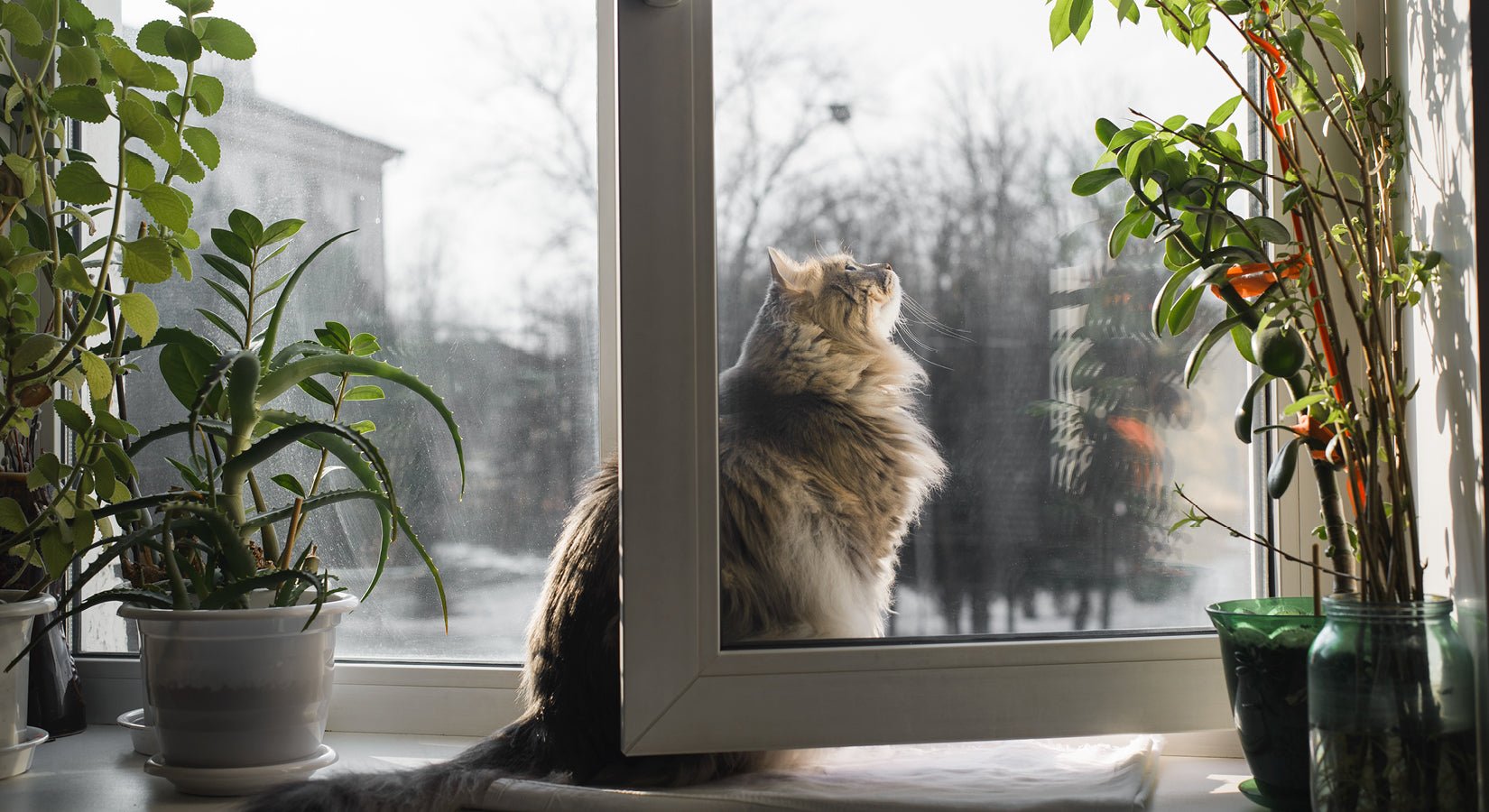With no clear-cut countrywide laws on letting cats roam freely, many US pet owners are opting to keep their feline friends indoors. But is this a missed opportunity for exercise, independence, and mental stimulation for your pet? Here’s why a catio might be the perfect solution!

The law
There are significant variations in cat ownership laws across the US, including issues like cat licensing, neutering, and the right to roam. While California, Maine, and Rhode Island have standardized laws for cats, many states consider free-roaming cats to be local issues, with communities often keen to protect cats, local wildlife, and birds and to decrease the number of feral cats. Where laws are in place, they’re strictly upheld and could result in your free-roaming pet being impounded.
As a result, 70% of US cat owners now keep their cats inside.
While many moggies are perfectly happy with this arrangement and are content to curl up on a comfy couch, every cat is different. If you regularly find your kitty staring wistfully out the window, making a dash for the front door, or even putting on a few pounds, it could be a sign that they’re lacking the mental and physical benefits that the outdoor world can bring.
Enter the catio!

What’s the big idea?
A play on the words ‘cat’ and ‘patio’, catios are a wonderful addition to any cat-loving home and are increasingly popular among cat owners in the US.
These enclosed outdoor spaces offer a safe and stimulating environment for curious indoor cats to enjoy the fresh air and sunshine, while giving you the peace of mind that they’re not in breach of local law, exposed to potential dangers like traffic or predators, or at risk of getting lost. They can get the outdoor enrichment they crave, while protecting birds and wildlife from their natural pouncing tendencies.
Often used with a cat flap, these handy havens also offer your kitty an additional living space, which can address territorial or boredom issues. If you’ve got multiple cats, you could even use the catio to separates them if one is in heat.
Catios can vary in size and design, ranging from small balcony boxes to elaborate garden structures that include climbing platforms, shelves, and toys. Balcony enclosures are ideal for city abodes, while the free-standing options are great for garden spaces. You can add covers to protect your cat from any adverse weather, too!
Flexibility – for you and them
These outdoor sanctuaries allow indoor cats to experience the sights, sounds, and smells of the outdoors. And any well-designed catio will include a cat flap, giving them the freedom to come and go as they please, without you having to react to meow-based hints or frantic carpet-scratching.
Cat doors encourage natural curiosity and well-being – in mind and body. Having reliable, easy access to the great outdoors means that your cat is encouraged to keep up their step count, as they’ll always have the opportunity to pop into the garden to stretch their paws.

What type of cat flap is suitable for a catio?
When it comes to cat flaps, it’s certainly not a case of ‘one size fits all’. But fear not, Closer Pets have plenty of options to ensure that your trusty companion is fully accommodated, as well as being the right type for the material the door is being fitted to.
Here are some options to consider:
- Microchip cat flaps – Using either your cat’s microchip or an ID tag attached to their collar, this type of cat flap will provide reliable and selective opening for your feline friend. Powered by batteries, they’re simple to install.
- Locking cat flaps – Ideal if you want to keep your cat either indoors or outdoors, the lockable types work using either a microchip, the ID tag you put on your cat’s collar, or by manually locking them.
- UPVC door cat flaps – UPVC doors are the most common door type, so the Closer Pets range of cat flaps for UPVC doors is really popular, providing weatherproof access.
- Glass door cat flaps – Designed with glass doors and patio doors (for those balcony cat enclosures) in mind, these are manufactured from tough polymer and include soft closure for minimal noise, plus a four-way locking system for extra security.
Want to find out more?
Check out our Pet Door Guide, which clearly explains which pet doors go through which materials, so you can choose the perfect one for your catio.


